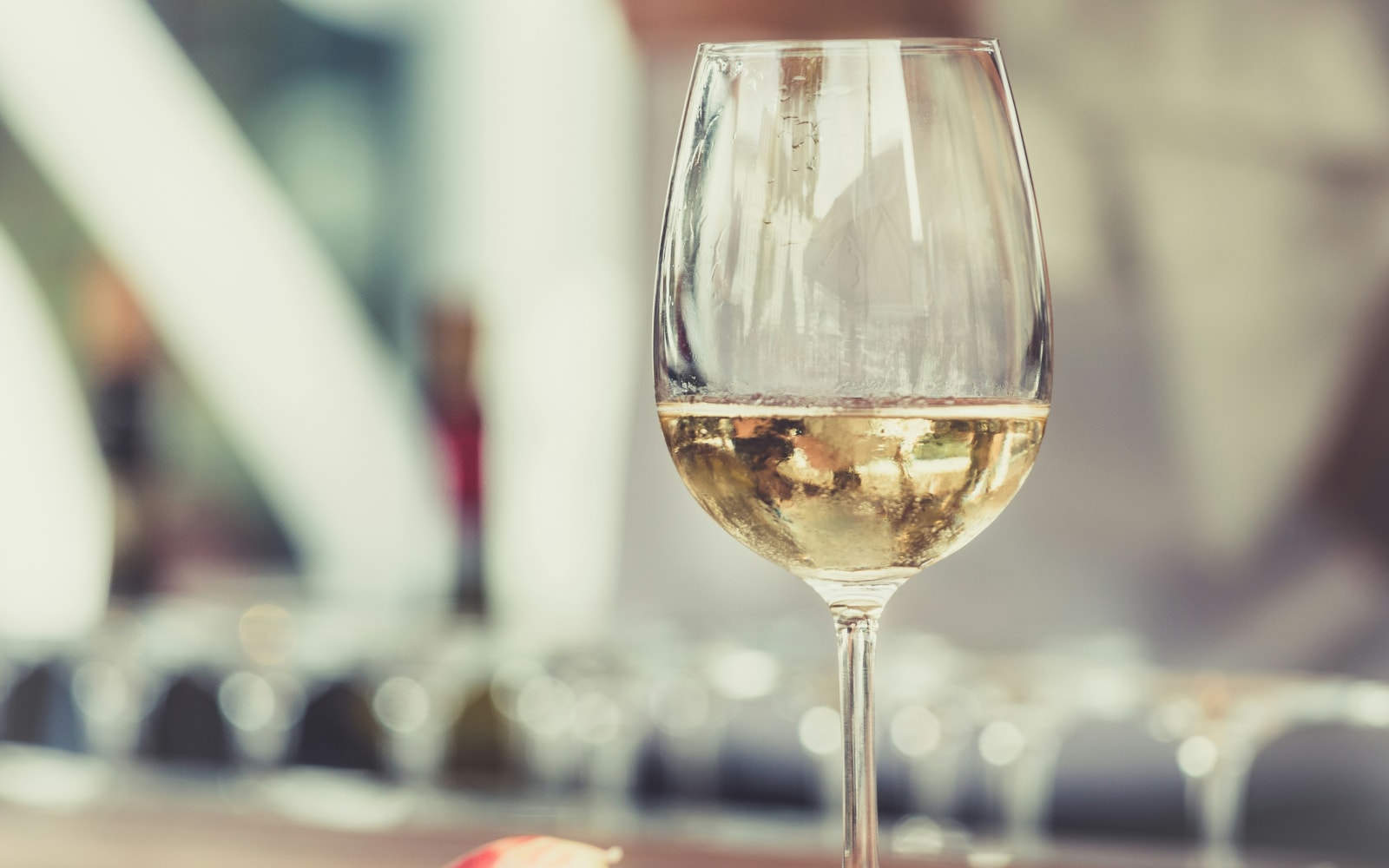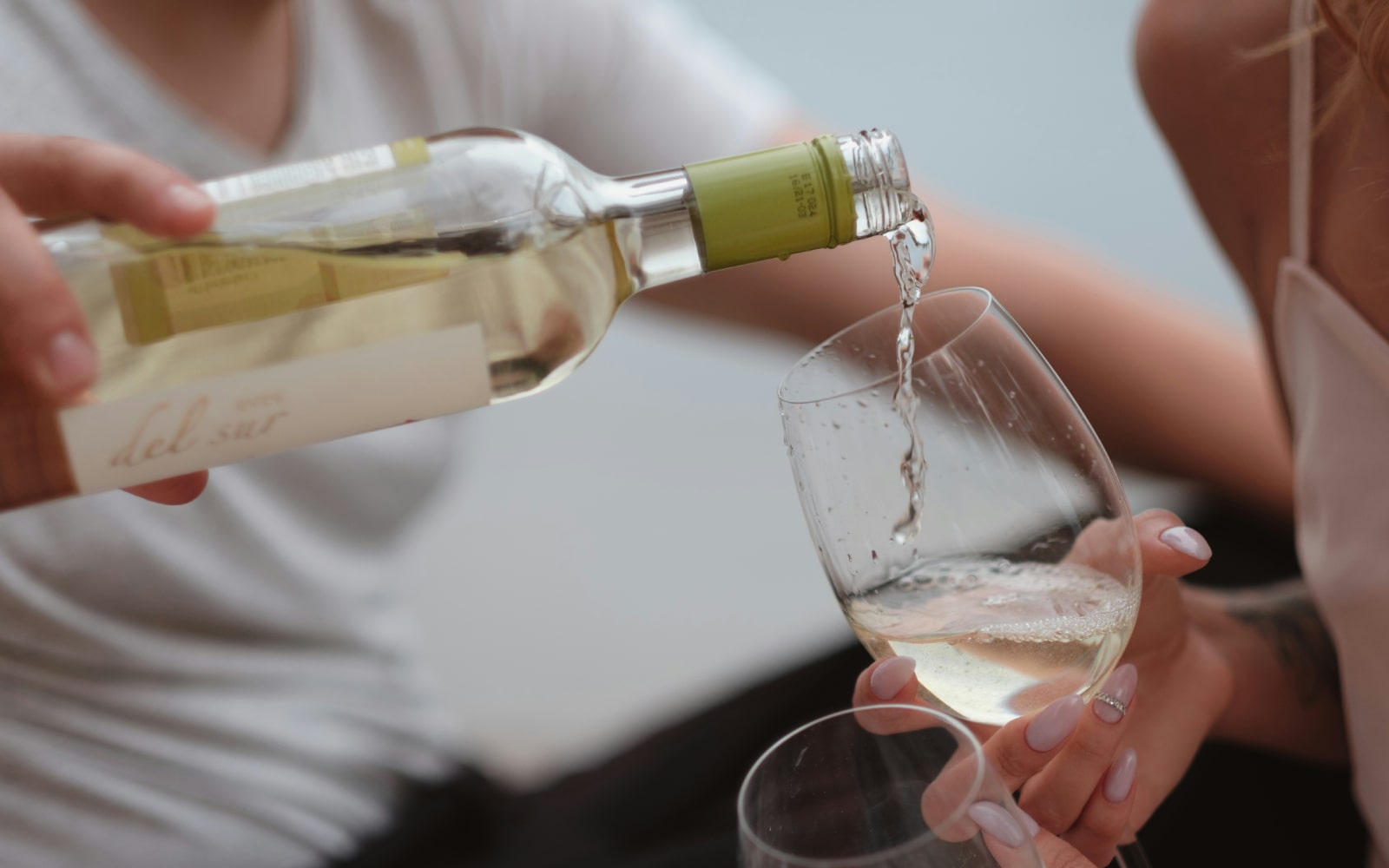We use cookies, including cookies from third parties, to enhance your user experience and the effectiveness of our marketing activities. These cookies are performance, analytics and advertising cookies, please see our Privacy and Cookie policy for further information. If you agree to all of our cookies select “Accept all” or select “Cookie Settings” to see which cookies we use and choose which ones you would like to accept.
Helpful Hints
Wine for beginner’s guide: tasting tips, storage methods & best wines for beginners
Demystify the world of wine with LG's beginner's guide. Learn about wine terminology, tasting tips, storage methods, and the best wines for beginners.
Wine 101: Your beginner’s guide to tasting, storing, and drinking wine like an expert
Have you ever tried to buy a bottle of wine as a gift for a friend? Or perhaps you've dined at a restaurant you've been eager to try and wanted the perfect drink to pair with your meal? What wine should you choose? A Barossa Valley red, a Central Otago white, Champagne? Heavy-tannins or medium-bodied?
With so much jargon and lingo, choosing a wine can almost seem like a deciphering a foreign language. Knowing what to pick can be tricky for a beginner wine drinker, and taking the first step to learn about wine can feel intimidating. But don’t worry, we have you covered!
Let this guide act as a beginner's cheat sheet to all things wine-related, making choosing your next bottle a little less daunting!
In this beginner’s wine guide, we will be covering:
- What is wine & how is it made?
- Different wine types
- Top wine tips for beginners
- How to taste wine like a pro
- Wine tasting notes & terminology
- Best wines for beginners
- Best wine storage methods
Wine 101 – Exactly what is wine?
If you’re looking to step up your wine game, having a bit of general wine knowledge is a must. From the production process to different grape types, read on to find out more. Let’s start this guide off by covering the basics of wine.
How is wine made?
Wine is the juice that comes from harvested grapes. To make wine, there are a few steps that can vary depending on the type of wine. On a basic level, the grapes are harvested and placed into large vats where they are then crushed. Over time, as the crushed grapes are left in the vat, they begin to ferment, and the alcohol starts to develop. After some time, the wine is strained and filtered to remove any excess skin or pulp. The clear liquid is then placed in a barrel and aged before the wine is bottled to age further.
What are the different types of wine?
Red wine
Red wines are made from dark-coloured grape varieties, like red or black grapes. The skin of these grapes is left on during the fermentation process, resulting in a darker coloured liquid. The typical flavours found in red wines range from fruity to earthy, depending on the levels of tannins or acidity.
White wine
White wines are made from green or white grapes. Their skin is removed during the fermentation process, resulting in a lighter-coloured wine. The main flavours found in white wines are usually described as crisp, fruity, and floral.
Rosé
Rosés are made with red grape varieties, but their skin is removed during the fermentation process, resulting in a pink colour. Rosés have a refreshing taste with red fruit flavours and floral notes.
Sparkling wine
Sparkling wines are carbonated, which creates bubbles in the wine! Champagne, Prosecco, and Cava are some of the most well-known sparkling wines and are usually associated with celebration.
What makes some wines different than others?
The main differentiating factor between wine types are the grapes that are used. On a very basic level, dark grapes will make red wine, while green grapes will make lighter wines. Different types of red or green grapes will create different types of wine. For example, a Cabernet Sauvignon grape will have a different taste compared to a Syrah grape, even though they’re both red grapes. The production method also impacts the type of wine, as well as the taste. The first stage of the wine-making process is fairly consistent across the various types. However, it is how the wine is stored and further aged that impacts the taste. Steel containers, wooden barrels, or ceramic tanks are some of the various storage methods of wine that will change the flavour drastically. Wine kept in a steel container will have the most neutral taste, because the steel does not impart any taste to the liquid, unlike wooden barrels that give the wine a fruity, oaky flavour, or ceramic tanks, which give the wine a smooth and light feel.
Top tips on wine for beginners:
Consume at the right temperatures
To get the most out of your wine, it is important to serve it at the right temperature! White wines, rosés, and most sparkling wines should be stored in a wine cooler or fridge. Remove the wines from the fridge about 15 minutes before drinking, so the wine is still nicely chilled without being so cold that it hides the flavour! For red wines, they’re best served at room temperature and poured into a large glass, so the full aroma of the wine can be enjoyed.
How you hold your glass matters!
Now you may be thinking, is there a correct method for how to hold a wine glass? And the answer is yes, there really is! The key is to hold the glass by the stem, using your thumb and first two fingers. Holding the glass by the stem prevents the heat from your hand from warming up the wine, which can impact the taste. Temperature plays a huge role in the taste of a wine, so holding the glass by the stem helps to maintain the wine's desired temperature, especially for white wines and rosés!
Opening a bottle of wine
Opening a bottle of wine can seem a bit intimidating! But don’t worry, we’ve got you covered. Properly opening a bottle of wine will not only impress your friends, but it can also help preserve the wine! To start off, you’ll need a corkscrew, or any wine opener that has a sharp screw or spiral attachment. Remove any foil or excess packaging from the wine bottle, so you’re just left with the bare cork. The next steps are as follows:
- Positioning the Bottle: First, place the bottle on a flat surface, like a table or countertop, and hold it with one hand. Keep the bottle at a slight tilt to prevent any spillage as you remove the cork.
- Inserting the Corkscrew: Next, place the tip of the corkscrew on the centre of the cork. Make sure it’s straight, so it will stay in the middle of the cork. Gently twist the corkscrew clockwise. Keep twisting until the screw is almost fully embedded in the cork. Leave one or two spirals visible to ensure you don’t pierce through the entire cork. Then, use the lever or handle to lift the cork three-quarters of the way out of the bottle.
- Removing the Cork: With the cork mostly removed from the bottle, grasp it firmly with your hand, or use the corkscrew, and gently pull the cork all the way out of the bottle in a slow and steady motion to avoid any spills! Once the cork is removed, have a look to make sure it isn’t damaged. Damage to the cork, like crumbling or mould, means the wine is corked and should not be drunk. A corked wine will have a damp and musty smell. If the cork is intact, pour a glass and enjoy!
How to taste wine
Learning how to taste wine is a key part of understanding its full flavour profile. Each step of the fermentation process has an impact on its taste, from the grapes selected and where they’re grown, to the storage method, to the length of time it’s aged for. Truly tasting all the complex layers of flavour is a crucial part of the wine-drinking experience. Here are a few steps to follow when tasting wine:
1. Pour and swirl
Pour a small amount of wine into your glass to start with. Take a good look at the appearance, the colour, the movement, and the clarity. These are all things that will impact the taste! Then, give your wine a small swirl around the glass. This will allow oxygen into the glass, opening up the wine and releasing its full smell and taste.
2. Give it a sniff
Put your nose inside the top of your glass, take a small breath in (avoid taking a large breath as this can dull your tastebuds), and smell the wine! Not only is smelling the wine before you taste it a great way to get fully acquainted with its full range of flavours, but it can also help detect if there are any issues with the wine, like it being corked or spoiled.
3. Time to taste!
Now it’s time to taste! Take a small sip, hold it in your mouth, and breathe in a little air. Now swill the wine around your mouth. This allows for more oxygen to get into the wine, intensifying the taste. Different wines will have different enzymes that react with your saliva glands, which will impact not only the flavour but also the feeling in your mouth.
Wine tasting notes
One of the most seemingly intimidating things when it comes to learning about wine is the terminology! Here’s a quick rundown of some of the key terms and tasting notes to look for when describing a wine that’ll make you feel like a sommelier:
Vintage:
Vintage refers to the year the grapes used to make the wine were harvested. Winemakers will usually label their bottles with the vintage year to indicate when the grapes were picked. Most good quality wines will get better with age, but some are best enjoyed the same year as the label states, like white wines and rosés.
Body:
Body refers to the weight and texture of the wine when it’s in your mouth. Wines are typically described as light-bodied, medium-bodied, or full-bodied. Light-bodied wines feel airier and more delicate, while full-bodied wines have a heavy and more substantial feel.
Acidity:
Acidity gives wine its crispness and freshness. Acidity can enhance the flavours of food and help balance sweetness in wine.
Dry vs. Sweet:
Dry wines have very little residual sugar, meaning they don't taste sweet. Instead, the flavour comes from the grape itself and other factors, like fermentation. Sweet wines, on the other hand, have higher levels of residual sugar, giving them a sweeter taste.
Round vs. Smooth:
Like body, these terms refer to the feeling and texture of the wine in your mouth. Round wines feel full and balanced. They will generally make your saliva glands more active, as the flavour will coat your entire mouth and tastebuds. Smooth wines have a silky texture and will glide easily down your throat.
Tannins:
Tannins are the compounds found in the skin, seeds, and stems of the grapes, as well as in the wooden barrels used for aging wine. They give the wine a dry and slightly bitter taste, along with a dry feeling in your mouth. Tannins are most noticeable in red wines. A wine with high tannins might taste a bit bitter on the first try and can take some getting used to! Wines with fewer tannins are recommended for a beginner, as they tend to be a bit smoother and have a more palatable taste.
Best wines for beginners to try
For beginners looking to get into wine, we recommend starting with wines that are delicious and not overly complex. Here are some of our picks for the best entry-level wines:
Riesling:
Rieslings are a great introduction to white wines because of their crisp taste and acidity levels. They can offer a spectrum of flavours from dry to sweet, which means they can suit a wide range of palates.
Pinot Grigio:
Pinot Grigio is a light and refreshing white wine. Its most bold flavours are of citrus, pear, and green apple. Like a Riesling, it’s crisp and acidic, making it a great choice for beginners.
Merlot:
Merlot is a smooth red that’s great for someone new to wine because of its dark-fruit flavour profile. It typically has softer tannins compared to other reds, like a Cabernet Sauvignon, making it more approachable for newcomers.
Prosecco:
Prosecco is a light, bubbly, and often slightly sweet sparkling wine. It's a fun and festive option for those looking to celebrate or who simply want to explore sparkling wines without splashing out on a bottle of Champagne.
How to store wine properly
Another important thing to know about wine is how to properly store it. You might be wondering, “Why is storage important if wine is supposed to improve with age?” and “Does wine go out of date?” While wine may not have a strict expiry date like perishable food items do, it can become spoiled over time if not stored correctly. Wines tend to be very delicate, and whether opened or not, they need to be stored in very particular environments to avoid deterioration. Incorrect storage of your wines can impact their quality, lifespan, and most importantly, taste! Here are our top tips to best store your wine.
How long does wine last once opened?
Once opened, the lifespan of a bottle of wine can vary depending on the type of wine and how it is stored. When storing a bottle of wine after opening it, the most important thing is to reseal the bottle to avoid air getting in and oxidising the wine. Tightly close the lid, put the cork back in, or use a wine stopper. For white wines, rosé, and sparkling wines, once the bottle is tightly resealed, they can be stored for 3-5 days in a fridge or wine cooler. For red wines, these can last up to 5-7 days once resealed. Lighter-bodied reds, like Pinot Noir, can be stored in a fridge or wine cooler. Medium and heavy-bodied reds, like Merlot or Cabernet Sauvignon, should be stored in a cool, dry area and kept away from direct sunlight.
How long does wine last unopened?
The lifespan of unopened wine can vary depending on the type of wine. However, the most important tip for preserving your unopened bottles of wine is storing them correctly. Light white wines, like Sauvignon Blancs and Pinot Grigios, and most rosés can last 1-2 years unopened. Higher quality rosés and medium-bodied whites, like Chardonnays, can last 2-4 years or more, depending on their acidity levels. Red wines generally have a longer lifespan than white, rosé, or sparkling wines, and usually can be kept unopened for 3-10 years! Depending on the type of grape variety and the production method, some high-quality wines will age in the bottle and are best served a long time after being bottled. A general rule of thumb when storing unopened bottles of wine is to keep them in a cool, dry place, and away from direct sunlight. A wine fridge is a great option if you’re looking to preserve your wines for as long as possible.
Where are the best places to store wine?
As luxurious as having a wine cellar may sound, it isn’t a reality for us all. But don’t worry, we’ve picked some of the best wine coolers and fridge freezers LG has on offer to ensure your bottles are stored correctly.
8 Bottle Mini Wine Fridge | GW-V08BT
The LG 8 Bottle Mini Wine Fridge is designed to create the perfect environment for storing and preserving your wine. With its compact size and elegant design, it fits seamlessly into any space while providing optimal wine storage conditions.
This mini wine fridge features a thermoelectric cooling system, which minimises vibrations and noise, preserving the delicate flavours of your wine. The UV-protective glass door shields your wine from harmful light exposure, while the adjustable temperature settings allow you to maintain the ideal serving temperature between 8℃ and 16℃ Celsius.
The LG 8 Bottle Mini Wine Fridge ensures optimal humidity to keep your wine in perfect condition. Additionally, the fridge includes convenient storage for a wine opener and features soft internal lighting for easy viewing of your collection.
LG SIGNATURE 65 Bottle Wine Cellar, with InstaView® | SG-W65TSL
The LG SIGNATURE Wine Cellar - SG-W65TSL is meticulously designed to provide the perfect conditions for storing, aging, and preserving your wine. Boasting Optimal Preservation Technology™, it minimises temperature fluctuations and reduce vibrations to help maintain the quality of your collection.
The wine fridge features multiple temperature zone technology, allowing you to set 3 different temperatures throughout the fridge, ensuring different types of wine can be kept at their optimal condition. Advanced humidity control prevents corks from drying out and oxidation from occurring.
The Inverter Linear Compressor minimises vibrations, preserving the delicate flavours of your wine. With a capacity to store up to 65 bottles, this wine cellar is both practical and stylish, making it a great addition to any home.
635L Side by Side Fridge with Craft Ice™| GS-V600MBLC
The LG Side by Side Fridge - GS-V600MBLC combines style and functionality to enhance any kitchen. This spacious fridge features a sleek design and offers ample storage, including a built-in wine rack that can store up to 5 bottles, perfect for wine enthusiasts.
The InstaView™ Door-in-Door feature lets you see inside without opening the door, reducing cold air loss. Advanced cooling technology keeps your food fresh, while the integrated water and ice dispenser adds convenience. This fridge is ideal for those seeking both practicality and modern features.
We hope this wine-drinking guide has provided you with all the essential tips and techniques to navigate the world of wine. From understanding how different wines are made to tasting notes, decoding wine terminology, and learning storage tips, this guide aims to answer all your wine-related questions. Whether you're a beginner or an aficionado seeking deeper insights, we trust this guide has been informative.
Now, it’s time to raise a glass to your newfound wine knowledge. Cheers!
Life’s Good!




